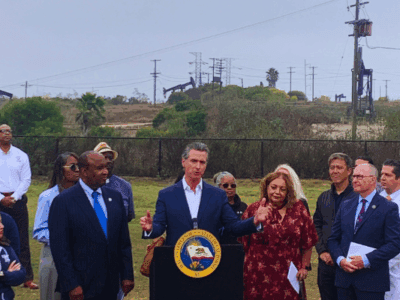Guest Bloggers Erica Morehouse and Tim O’Connor of Environmental Defense Fund: 9th Circuit Allows CARB to Enforce the LCFS
(It’s exam season; so, for any remedies students out there this post can count as review!)
On Monday, a motions panel at the 9th Circuit Court of Appeals ruled that the California Air Resources Board (CARB) can continue enforcing the Low Carbon Fuel Standard (LCFS). This decision stayed (pending appeal) a trial court judge’s preliminary injunction against the LCFS which was based on a finding that the LCFS violates the Dormant Commerce Clause. Ann Carlson, Rick Frank, and David Pettit (of NRDC) have described this previous decision here, here, and here.
The motions panel decision bodes well for California and the LCFS, both from a legal and an environmental perspective. A merits panel of the 9th Circuit will begin to consider whether or not the LCFS indeed violates the DCC on May 25, when the state and environmental NGO Appellants, including EDF, will file their opening brief. A win for the state looks promising, though, since one of the factors the motions panel considered in granting the stay motion was “whether the stay applicant has made a strong showing that he is likely to succeed on the merits.” See Hilton v. Braunskill, 481 U.S. 770, 776 (1987). Many of the previous Legal Planet posts on this case explore this question more fully.
In granting the state’s stay motion the court also had to consider: (2) whether the applicant will be irreparably injured absent a stay; (3) whether issuance of the stay will substantially injure the other parties interested in the proceeding; and (4) where the public interest lies. See Hilton v. Braunskill, 481 U.S. 770, 776 (1987).
As the state and other appellants argued in the stay motion, these factors relate in large part to the environmental benefit that will accrue to California now that CARB can continue to enforce the LCFS. The LCFS seeks to reduce the carbon intensity of fuels ten percent by 2020 and allows producers who exceed this standard to trade credits with those who don’t meet it. When the trial court enjoined the LCFS, it disrupted a market that was already functioning, with over 100 applications for individual carbon intensity values submitted and negotiations for LCFS credits occurring based on those values . The LCFS was expected to achieve over one million metric tons of reductions in 2012 and twice that much in 2013; with the stay now in place, California can reasonably expect to meet those targets. Perhaps even more importantly, the decision of the motions panel signals that long-term reduction requirements based on lifecycle emissions models are likely to hold, meaning the dark cloud created by the lower court’s sweeping decision as it related to similar state led regulations is significantly lightened.
Reader Comments
2 Replies to “Guest Bloggers Erica Morehouse and Tim O’Connor of Environmental Defense Fund: 9th Circuit Allows CARB to Enforce the LCFS”
Comments are closed.







Reblogged this on Environmental regulation.
Reblogged this on Environmental regulation.